Want to create or adapt books like this? Learn more about how Pressbooks supports open publishing practices.
Instructional Strategies and Engaging Pedagogies

2 Problem and Project Based Learning
Amena Karimi; Fatima Nasiry; and Zainab Mirzaie
Learning Objectives
After reading this chapter you will:
- Be able to differentiate between project-based and problem-based learning.
- Know effective strategies to improve students’ critical thinking and creativity skills.
- Develop projects that foster students’ independence, teamwork, and communication skills.
- Teach students how to organize, develop, and manage successful projects.
- Relate problem and project-based learning to the real world.
- Break down problems into components to process and provide solutions.
This chapter contains an overview of the problem and project-based learning, its advantages, and challenges. The main focus of the chapter is on the effective tips and strategies for implementing this pedagogy in the k-12 setting. Moreover, it states how problem and project-based learning pedagogy is different from a traditional classroom while outlining its impacts on solving real-world problems and students’ life. This chapter is written based on reviewing several kinds of literature and their findings and also, real experiences of teachers from the internet and a podcast interview, which is included here as a source of information and knowledge sharing for instructors.
Introduction
Problem-based learning (PBL) is a student-centered approach where students learn about a subject or course by working in groups or individually to find the solution for an open-ended problem (Cornell, n.d.), and project-based learning (PBL) or project-based instruction is an instructional approach that gives students the opportunity to acquire knowledge and skills through interactive projects, along with the challenges and difficulties they may confront in the real world (M, K, 2022). Thus, problem- and project-based learning, when combined, is a learning method that allows students to enhance their understanding by experimenting with a project practically (Thomas, 2000). It requires them to design, execute, and assess projects that have real-world applications outside of the classroom (Westwood, 2008). According to Affandi et al. (2016), project-based learning and problem-based learning are terms that are employed in order to define a variety of instructional strategies. These approaches focus on students and provide them the opportunity to ask the teacher a question or several while working (Bell, 2010). The advantages of these approaches are to allow students to make decisions, find solutions to problems while learning, and develop their ability to think critically (Ndraka, 1985). PPBL has a wide range of applications in the student-centered method, in which students learn by experimenting and the teachers play a significant role in facilitating the instruction for the students.
This chapter discusses the problem and project-based learning, their differences, along with their advantages and disadvantages. In addition, the practical strategies to improve the student’s critical thinking and creativity skills include several ways the teachers use in their classes to enhance the student’s critical thinking and creativity skills. Furthermore, it includes tips on how to implement an effective PPBL that fosters student independence, develops student teamwork, and improves student communication and collaborative working skills. It also includes the key elements to consider for a successful project and ways to prepare the students to organize, develop, and manage projects. Moreover, this chapter covers the role of the problem- and project-based learning in solving real-world problems and the relationship between PPBL and traditional learning methods as well as how it is used in K–12 settings.
Problem-Based Learning
One educational strategy is problem-based learning, where students spend a lot of time researching and responding to solve challenges, and problems but authentic questions to gain Knowledge and skills (Hartman et al, 2013, p. 2). PBL is a targeted, practical form of education based on the evaluation, defense, and resolution of significant problems. students in this method learning practice many skills in a group to become skillful (Loyens et al, 2011 p.5). To facilitate student learning through the learning cycle, the instructor is a facilitator (Hartman et al, 2013, p. 2). Throughout the cycle, the students are presented with a problem scenario. By selecting the crucial information from the event, they construct and analyze the problem, representing the issue and developing theories regarding potential solutions.(Hussain et al, 2014 p.51). Finding knowledge gaps about the issue is a crucial step in this cycle, When students engage in self-directed learning, these knowledge gaps turn into what is known as learning difficulties (Loyens et al, 2011 p.4). Students then put their newly learned knowledge to use by applying it and evaluating their hypotheses in light of what they have discovered SDL. The teacher assists students in acquiring the cognitive skills required for cooperation in problem-solving. (Silver, 2004, p.237).
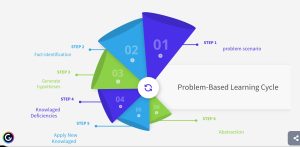
Figure 1 The process of problem-based learning
Problem-based curricula give students supervised opportunities to learn by resolving challenging real-world issues. according to Silver (2004), PBL was created with several significant goals which are listed below.
- It is intended to support students in building a broad and flexible knowledge base,
- Effective problem-solving abilities,
- Self-directed,
- Lifelong learning skills,
- Effective collaboration abilities, and intrinsic motivation to learn.
Project-Based Learning
PBL is a teaching method based on practical assignments that pose challenges for students to solve as well as learning activities. Also, PBL is described as a student-driven (student-centered) approach to learning in which students are obliged to engage in a real project by formulating a topic or inquiry and working under the guidance of teachers to produce a project to present to a select audience (Le, 2018 p.2). In other words, students are involved in creating their research questions, organizing their research, planning their learning, putting into practice a variety of learning methodologies, and evaluating their projects that have applications outside of the classroom. These tasks allow students to work largely independently for lengthy periods and result in realistic presentations or products (Colley, 2008, p.27).
The same to problem-based learning, project-based learning works through a cycle. This cycle includes Orientation, a project’s identification, Planning, implementing a project, reporting project findings, and evaluation. Students will be familiar with the project’s question, significance, methodology, resources, and timetable by the end of this cycle. Then they define each member’s function and accountability. Finally, they need to assess their workflow (Colley, 2008, p.27).
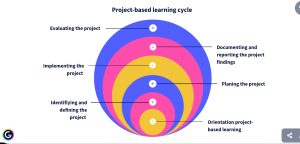
Figure 2 The Process of Project-Based Learning
After suffering for a while in most academic contexts, many students discover the purpose and justification for learning by working on projects. Project-based learning can assist students in meeting state requirements and preparing for state exams by aiding the acquisition of subject-matter knowledge as well as reasoning and problem-solving skills. It shows that PBL’s ability to engage students and motivate those results in high achievement. A larger variety of learning opportunities can be introduced into the classroom through PBL. According to Le (2018), PBL in teaching and learning provided these significant goals which are listed below.
- Students’ academic achievement
- Students’ understanding of the subject matter
- Students gain an understanding of related skills and strategies
- Students’ positive attitudes toward learning
- Perceived changes in work habits and other PBL process behavior
What Is the difference between Problem and project-based learning
Problem-based learning and project-based learning are frequently mixed. This may be partially because the abbreviation PBL is commonly used to describe both techniques. Although they are similar, problem-based learning and project-based learning differ in a few significant ways. Students participate in both PBLs by striving to provide answers to or resolve issues. In both approaches, students are tasked with coming up with a unique solution to challenging problems that lack an obvious solution. The result that students produced is the primary distinction between problem- and project-based learning. In a problem-based learning class, students just emerge a solution to a problem. While Students in project-based learning must develop their concepts and finish a comprehensive project (Lynch, 2017). One type of problem-based learning is project-based learning (PBL), which differs from other kinds of PrBL encounters in a few key ways. Both PBL and PrBL begin with a real-world problem, but the two have slightly different processes and results (Segar, 2021).
Video 1 Difference between problem and project-based learning
Advantages and Disadvantages of Problem and Project-Based Learning
According to Jones (2006) and Mihic and Zavrski (2017), problem and project-based learning have several advantages in the learning process, while it has some challenges either, some of which are listed below.
- Avoiding overload of information and focusing on learning fundamental information that is applicable to real-world circumstances.
- Fostering the development of significant transferrable skills that are beneficial for lifetime learning. They include team leadership, communication, and problem-solving.
- Allows control over and opposition to the learning process. encouraging pupils to be responsible for their own learning. This is a key skill for medical specialists who actively participate in their own ongoing professional progress throughout their careers.
- Strengthens analytical reasoning. Learners are more motivated to learn when learning is centered on “real-life” occurrences.
- Improves problem-solving and higher-order cognitive abilities. It promotes a deep rather than a surface-level approach to learning by requiring students to interact with the content in greater depth and on more levels than in typical teaching approaches.
Disadvantages
- Because the facilitator job has taken the place of the traditional teaching role, it could be difficult for trainees to emulate effective teachers as role models.
- Teaching staff members should foster learning rather than quickly transfer their knowledge. To academics, this could be perceived as unproductive and even demotivating.
- Why Information acquired through PBL is less structured than information acquired through traditional learning.
- Training facilitators can be difficult, and there aren’t many academics that have facilitating abilities in addition to more traditional teaching ones.
- The time commitment that trainees must make to PBL. For aspiring anesthetists or prospective doctors of acute care, this can be particularly challenging.
- Time limitations on the creation, administration, and administration of PBL courses.
Effective Strategies to Improve the Student’s Critical thinking and Creativity skills
Problem-and project-based learning is an essential pedagogy for developing creative thinkers and learners. Students answer genuine problems by creating their own queries, making plans for their own learning, arranging their research, and putting a variety of learning techniques into action. Students thrive in this student-centered, motivating learning environment and develop valuable skills that will lay a reliable foundation for their success.
Critical Thinking
The skill to interpret data, draw assumptions, demonstrate points effectively, analyze data, and assess data is referred to as critical thinking. However, the student’s critical thinking skills are still developing (Anazifa et al., 2017). Critical thinking, which also refers to higher-level thinking (higher-ordered thinking or higher-level thinking), consists of the top three competencies in Bloom’s Taxonomy: the capability to analyze, summarize, and assess (Bookhart, 2010; Moore & Stanley, 2010). Critical thinking skills can be developed through open-ended or distinct questions. Anazifa et al. (2017) cite that open-ended questions are those that have multiple right answers. Hence, problem-based learning is among the learning methods that promote critical thinking skills, particularly in science. Problem-based learning introduces problems that motivate students to consider not only the reason but also the method for addressing the issue (Strobel & Barnevel, 2009). Students’ abilities to think critically can be developed and improved through problem-and project-based learning.
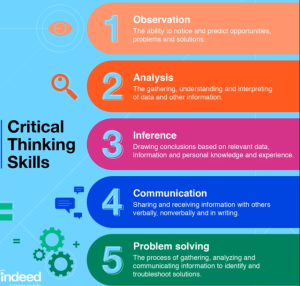
Figure 3 Critical Thinking Skills
Creativity S kills
The goal of creativity development is to train students to confront challenges while working in groups or individually (Kind & Kind, 2007). According to Trilling and Fadel (2009), creativity can be discovered in an environment that promotes queries, persistence, willingness to explore innovative ideas, high trust, and acquiring knowledge from failures and mistakes. Continual practice can assist in increasing the student’s creativity. For example, learning through projects to solve real-world problems is among the most effective methods for fostering creativity. In addition, Anazifa et al. (2017) cite that creative thinking has a significant impact on students’ academic achievement along with PPBL.
How to Improve Critical Thinking and Creativity Skills ?
There are several ways for improving critical thinking creativity and abilities, Jamie Birt. (2019):
- Increase S elf- A wareness: The student should think about their thought processes, values, morals, integrity, and other perceptions as their self-awareness grows. The teachers should teach them to consider their preferences and dislikes with objectivity. The teachers can better understand their students’ perspectives by becoming more aware of their personal preferences, areas of strength, and prejudices.
- Recognize the Student’s C ognitive S tate: The way students obtain and apply relevant data should be determined and analyzed. It is crucial to understand a person’s listening, perceiving, and responding processes in order to improve cognitive productivity in group or individual work. Being a critical thinker involves being aware of our prejudices and how they impact our decisions and choices. The students must take some time to consider their thought processes before attempting to make a decision. They will be able to react more logically as a result.
- Develop Vision: Students should be taught to consider how others might respond to a circumstance or decision they make. It’s important to consider a condition’s possible consequences as well as any factors that could have a positive or negative impact on it. Making the best choice will be facilitated by having the foresight to foresee the reactions that their behavior in collaborative work will result in.
- Practice Active Listening: Critical thinking requires active listening as a fundamental skill. While collaborating with their peers and being guided by their teachers, students must be attentive and listen intently. They should practice empathy and concentrate on comprehending the viewpoint of their adversary. Understanding what they want, need, or anticipate in great detail can help them respond positively and produce positive results.
- Ask Questions: Students must always ask their teachers for explanations if they have questions. They could, for instance, ask about the things they already know to make sure that everything they already know is accurate, or they could ask follow-up questions to find out if there was any specific information that was overlooked or misunderstood. This step can help students give information a purpose and value.
- Examine the Available Evidence: The students must practice critical thinking to reach their final decision, which they must support with evidence from their past experiences. By conducting experiments, organizing facts, and using prior experience as available evidence, students can come up with a more appropriate and effective method for working within the present.
In addition, Jamie Birt (2019) states that taking part in team-building exercises, looking for leadership positions, and seeking assistance from an instructor can all help students develop their critical and creative thinking abilities.
How do Problem and Project-Based Learning foster students’ independence?
Independence or self-directed learning is the learning that students learn by doing on their own. It does not mean students take isolated from others but students for learning communicate and take guidance from others. In self-directed learning, the teacher is not the one who teaches each and single part of the subject, but students independently go to search and learn (Kapur, 2019 p.1). The importance of self-learning leadership is that the student is not limited to the teacher’s method, theory, and plan, but seeks different and new ways to learn and complete her or his project (Tripon, 2015 p.40). This makes the student learn and gain experience beyond what is expected (Kapur, 2019). These project-based learning techniques enable students to engage in self-directed learning (Bagheri et al. 2013 p.19):
- The organization of learning around real-world problems
- Student-centered instruction
- Collaboration
- Teacher as facilitator
- Authenticity through the use of authentic materials and audiences
- Formative assessment
- And the production of authentic artifacts
Teamwork Development in Problem and Project-Based Learning
Teamwork is small group students accomplishing unit goals work together on one project. Teamwork has several advantages it encourages students to learn from one another, students get social support for individual efforts, and students through teamwork learn different skills (Campbell & Siha, 20015 p.2). A successful team has these characteristics, it helps the member learn from diverse knowledge, skills, experiences, and interests of team members; the team helps members find creative responses to challenges; the team accelerates the product, services, and profitable strategies and the team directed the challenges to a productive direction (Serrat, 2017 p4). In today’s world, most organizations in different parts accept teamwork because they think the team is more helpful for solving problems than the individual. Mainly the problem with these features (Serrat, 2017 p2.3):
- The problem is relatively complex, uncertain, and holds the potential for conflict
- The problem requires inter-group cooperation and coordination.
- The problem and its solution have important organizational consequences.
- Deadlines are tight but not immediate.
- Widespread acceptance and commitment are critical to successfully implementing a response to a situation, condition, or issue.
In PPL, the teacher typically assigns a group project that the students must complete by the end of the term. Working on projects helps students develop a variety of abilities, including active listening, communication, problem-solving, team building, task allocation, and team relationships, also learning delegation, quality standards, and goal-setting techniques (McCuddy et all, 2002 p.7).
Improving Students’ Communication Skills via Problem and Project-Based Learning
A meaningful exchange of thoughts, opinions, ideas, viewpoints, or messages between at least two people is often regarded as communication or it may also be seen as an exchange of concepts and knowledge to create a shared understanding for the efficient operation of business associations. (S U Putri and S Hidayat, 2019 p. 2). Good communication has these qualities: First, it is clarity. Good communication must transform the messages clearly without any wrong pronunciation, grammar matters, and wrong spelling words. Also, the information must be unity and coherent. It helps there not be any doubt or misunderstanding for the receiver. Second, good communication is brevity, we should communicate with few words. It means in a short time try to transform your message into simple and short words instead of long phrases. Conciseness, avoid misunderstanding and confusion among receivers. Third, communication should be complete. It should include facts and necessary information. Communication shows the personality and images of a person and organization. Incomplete information is the waste of time and shows the weakness of the sender. Additionally, in good communication sender considers the feeling and wishes of the receivers. Finally, listening with patience is one of the most important characteristics of communication related to the receiver. The receiver should pay attention with patience does not harry to respond especially in oral communication (Girdhar & Malik, 2018 p1.2). Problem-based project-based learning encourages students to practice their communication skills throughout each term of their academic careers, it means Students can connect and communicate with one another while working on a project by engaging in activities, and as they complete the project, they use their persuasive skills to share ideas and persuade one another(S U Putri and S Hidayat, 2019 p. 8). By the way, Students will learn how to communicate effectively by practicing how clarity, conciseness, completeness, and consideration communicate.
Elements to C onsider for S uccessful P rojects
Problem and project-based learning enable the students to work collaboratively with their classmates to share their team working skills and design a successful project. Realistic projects typically require success criteria. However, PBL requires students to tackle real-world issues (Bell, 2010).
According to Wyman. (2020), the elements to be considered for making a Project successful are;
- Provide meaningful real-world connections : The students need to be given real-life problems to be able to comprehend them thoroughly. Developing a component in real life instills importance while also stimulating curiosity, awareness, and emotional development.
- Make time for practical learning : Students are required to make time for experiential learning elements that require them to examine and experience them through trial and error. Knowledge gained from failed attempts is equally beneficial for implementation as knowledge gained from successful attempts.
- Provide opportunities for team building : Allow students to collaborate creatively so that they can express their views and test ideas to increase participation and class connection. Instead of relying solely on the teacher, students can benefit from one another and gain confidence as researchers and observers.
- Reconsider the driving question : It is critical to stay focused on the question in order to solve the problem and complete the project-based learning project successfully. Sticking to the driving question makes sure that the definition of the component is not lost, that your rubric accurately examines your key goals, and that students are aware of its greater emphasis and benefit.
- Differentiate through teams : Educators must divide the students wisely to verify the type of success the teacher knows they require. Make a distinction based on academic excellence, communication ability, personal preferences, or motivating factors. This provides students with better opportunities of grasping the material in the ways that are most effective for them. This, in turn, helps them feel personally and academically successful within the group.
- Focus on student-driven learning : Once the problem and project-based learning projects are underway, remember that students will need this time to research and discover new thoughts by the teacher’s guidelines.
- Include self-assessment : Accountability and in-depth interpretation are encouraged when students are asked to evaluate their work and performance as valuable teammates, leaders, observers, and collaborators. If these assessments have been a regular practice, students frequently begin to recognize how they have enhanced their interpersonal skills.
- Reflect on your progress : These reflections help teachers improve each element of project-based learning so that it gets better with every iteration and the students get the most out of it.
Ways to P repare the S tudents to O rganize, D evelop, and M anage P rojects
Project organization, development, and management have emerged as essential skills for learners who have started organizing their work in the form of projects led by groups of students with the goal of achieving successful objectives for their project (Kloppenborg. et.al, 2016). Furthermore, Kloppenborg et al. (2016) cite that to meet project criteria and deal with various challenges while working on a project, project management necessitates applying skills, tools, and methods for executing the project. (PMI, 2000, p. 6)
The following are some ways that problem and project-based learning can help students prepare. (Method Schools Team, 2017):
- Time management: A successful project needs an incredible quantity of time management to be developed and presented in order to be organized, developed, and managed. To accomplish a project by a specific deadline, the student should first ascertain how much time they will need to allocate as a whole. They must then divide a certain time period into relatively small, more achievable steps. Students would be more ready to work on complex projects if they had the chance to acquire this expertise through a wide range of projects.
- Organizational skills: Assembling projects teach students the value of organization, both physically and mentally. This is certainly relevant if they are provided with a separate working environment, which they must maintain organized. It also relates to individuals who collaborate in communal environments like group work and are responsible for organizing their own opinions, concepts, and materials.
- Collaboration Skills: The students should be taught how to work collaboratively while working with their peers, which will enable them to enhance their skills by working as part of a group. In addition, it allows the students to look at the importance of teamwork thoroughly, which is an indispensable learning opportunity when it comes to working in a cooperative environment as part of a group.
- Problem-Solving Skills: Traditional methods of instruction necessitate students to learn in an extremely passive way. For instance, passive learning in the traditional school setting involves students listening to long, unsatisfying lectures. However, problem- and project-based learning encourages learners to think outside their comfort zones and find solutions in a new and exciting manner.
- Self-Direction: The ability to divide any activity into achievable pieces in order to determine what to do next is a critical skill that every education system should assist students in developing. It is even more significant to have the motivation to complete those activities. These two abilities combine to produce a person with wonderful work. Thus, problem and project-based learning expand the student’s knowledge to organize, develop, and manage a project with productive results.
- Ability to Find Information: To organize, develop, and manage important tasks, the creator must conduct extensive research. Because lecture-based and memorization-based learning are rarely used in project-based learning, students must conduct their own research. This is a critical step in the procedure because it teaches students how to find helpful information.
- Constant state of Learning: The most incredible positive aspect of problem and project-based learning is the enthusiasm it fosters in students. Students in a project-based learning classroom enhance a long-standing willingness to satisfy their curiosity since the projects designated almost exclusively focus on subjects that intrigue them and also play an influential role in their education. This seems to be best suited for acquiring new abilities and adapting to environments that change frequently. Project-based learning is an excellent alternative to traditional curricula, particularly for preparing students for upcoming group projects for their further education.
Bell (2010) states students complete a self-evaluation at the end of the project. They assess not only their own learning but also the effectiveness of their interpersonal relationships. They consider their communication skills and whether they could communicate with other students in terms of listening thoroughly to their ideas and having their own perspectives heard. Effective implementation and practice of this expertise will contribute to competency and deep understanding over time.
Role of Problem and Project-Based Learning in Solving Real-World Problems
Problem-based learning is about solving real-world problems in unique ways. In problem and project-based learning, students are immersed in real-world issues, helping them to develop critical thinking, metacognitive abilities, creativity, and invention (Devilee, 2008). One of the important characteristics of PPBL is that it uses real-world, relevant problems that are meaningful to learners and makes learning more personalized and practical.
Where did Problem-Based Learning Emerge from?
Problem-based learning was first implemented at McMaster University of Canada in the 1970s (Barrows, 1994; Norman and Schmidt, 1992 as cited in Gallagher, 1997). The McMaster team of the medical school noticed that there are big differences between medical students whose time was passed with textbooks and physicians in their examining room. They discovered that, although medical students had only the correct answers and were not flexible thinkers, physicians were constantly willing to modify their thoughts and build new notions of what was wrong with patients. The McMaster university team came up with the next best thing—simulated patients, who are frequently taken from genuine case files—after seeing that learning environments where students were engaged with textbooks but not real case patients maintained the students as constrained learners. Assigning relevant texts and educating pupils on problems are preferable. By using teachers as problem-solving guides rather than as all-knowing experts, PBL transformed traditional learning into problem-based learning (Gallagher, 1997). It later spread to other disciplines of economy, business, law, and education. Because PBL has a strong emphasis on real-world issues and social processes, it belongs to the social family of educational practices.
Problem and Project-Based Learning Vs Traditional Learning
The concept of one-size-fits-all instruction is associated with traditional education. This type of training makes the assumption that regardless of their innate talents and abilities, all students must go through their education at the same rate and with the same resources in order to reach the same level of abilities, knowledge, and skills. This helps them design unique assessments that raise the bar for all students to the same level. But students are really different from one another. Each of them possesses a distinctive skill, learning style, IQ, and rate of information processing (Samurai, 2021). Whereas John Dewey’s concept of subject matters in learners was the foundation for problem and project-based learning in his book Education and Democracy. He believes that “knowledge exists as the content of intelligent ability—the power to do” (p.192). The qualities that individuals learn by doing—such as how to walk, talk, read, write, skate, ride a bicycle, operate a machine, calculate, drive a horse, sell goods, manage people, and so forth—stick with them the longest (Dewey, 2001). The following table makes the differences between the 2 models and their learning outcomes easier to understand.
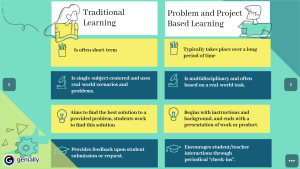
Figure 4 PPBL vs traditional learning Method
Problem and Project Based learning in the k-12 setting
PBL appears to be a successful method for raising students’ accomplishment levels and is a potent tool for tying students to their community with actual goals and audiences. It is crucial that kids understand they have a voice and what can potentially lead to change. There is a link between the students’ project’s purpose and every class. Therefore, PBL through civic education is a crucial component of students becoming engaged, contributing, and functioning citizens of their communities (Edutopia, 2017). Because they meet problems without conducting any background research and with knowledge insufficient to address the challenge, PBL calls for students to expand their existing knowledge and understanding and apply this expanded understanding to propose a solution. “Ill-structured” problems without a single, straightforward, or formulaic answer inspire students to ask questions and look for more information (Wirkala and Kuhn, 2011).
Significant Effects of Problem and Project-based learning on students’ personal and academic lives
- Critical Thinking and Problem-Solving Skills
To fulfill the criteria of the 21st century, one of the eligibility requirements is the ability to think critically and solve problems. When searching for accurate solutions and understandings about the real world, critical thinking refers to a trustworthy and effective mental process. It mostly concerns the process of evaluating concepts in a more concentrated manner (Sholihah and Lastariwati, 2020). One of the instructional approaches that promote critical thinking and problem-solving abilities is problem and project-based learning. In this model, the amount of knowledge transferred from teacher to students is not as important as the development of critical thinking competence. By utilizing their communication, problem-solving, critical thinking, and independent learning skills, it allows students the freedom to tackle educational challenges. This ability to solve problems can be observed in how students look into a situation and identify solutions (Ernawat, 2022). Through PPBL, students will learn the process of solving problems through the following steps which are a part of design thinking too.
- Determine the problem.
- Make a list of all potential solutions or actions.
- Consider all of the options.
- Decide which approach to try.
- Use the answer to your problem.
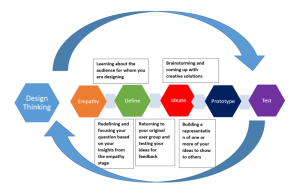
The process of students working to solve a real-world problem is an illustration of design thinking in which children use real-world situations to address problems and come up with solutions (Wikibooks, 2016). Understanding the problem at hand is a crucial indication of the problem-solving abilities that need to be developed during learning. This is consistent with the beginning steps of the PBL paradigm, which entail posing problems for students to solve. Students are taught to comprehend a problem, formulate a solution, implement the solution as planned, and evaluate all phases through problem-based learning (Sari et al., 2020).
- Collaborative Activities
Research has demonstrated that using a team to work on projects to find answers or ideas for problems in the real world increases students’ social attitudes toward teamwork. A problem and project-based learning approach involves students in team and collaborative activities. In a capstone college course, around 85% of students reported receiving good feedback regarding their team’s performance, according to a research by Kapp (2009). This course was evaluated in 2 steps of individual and collaborative assessments to show how students develop through peer reviews and feedback. Adopting PPBL from elementary to higher education creates the social attitude of teamwork for students. Not only the educational life but personal and academic life of students requires the skill of collaborative working. According to AC Nielsen Research Services (2000) as cited in (Jalinus et al., 2020) employers are looking for people with abilities including creativity, problem-solving, and cooperation. According to Wulandari et al. (2015), in the workplace, problem-solving requires strong teamwork in addition to knowledge and abilities. According to the study by Setiawan and Soenarto (2017), three competencies—teamwork skills, self-management skills, and technological skills—have a high level of needs when it comes to categorizing the effective competency of graduates required by the sector. Students can encourage one another and aid in the success of their projects by working on cooperative projects. Many students encounter both technical and non-technical issues when completing projects, and teamwork is the key to resolving these issues. Since they are aware of it, students naturally develop their collaborative skills to address difficulties (Jalinus et al., 2020).
Students explore to learn about a subject via problem- and project-based learning, which is a student-centered educational strategy.(Thomas, 2000). Most people think problem-based learning and project-based learning look similar, but there are a few significant ways they differ. While in a project-based learning session, students are required to develop their ideas further and complete a whole project, students in a problem-based learning lesson are only required to come up with a solution to an issue. (Lynch, 2017). Although there are some challenges to the implementation of PPBL like a lack of professional facilitators, a lack of time, and less structured information, the implementation of this method of learning has effective outcomes. First of all, PPBL fosters the students’ independence. In this method, it is not the teacher’s responsibility to provide or teach everything to the students; they learn every single thing through working on a project, and the teacher is a facilitator. Second, project-based learning fosters the development of delegation, quality standards, and goal-setting abilities in students. These skills include active listening, communication, problem-solving, team development, task allocation, and team relationships.(Method Schools Team, 2017). Third, engaging in project-related activities encourages student interaction and communication. As they work on the project, they make every effort to share ideas and convince one another(S U Putri and S Hidayat, 2019).Students will practice effective communication skills like clarity, brevity, conciseness, completeness, and consideration through the projects (Girdhar & Malik, 2018 p1.2). Finally, the PPBL develops the critical thinking and creativity skills of the students. Students in PPBL practice the process of solving problems critically by identifying the problem, finding a list of possible solutions, considering the possible solutions, attempting the chosen solution, implementing the solution, and assessing the solution (Colley, 2008, p.27). In addition, there are plenty of methods to advance critical thinking and creativity skills, such as increasing self-awareness, recognizing students’ cognitive states, developing vision, practicing active learning, asking questions, and examining the available evidence. Furthermore, problem- and project-based learning allows the students to perform the given tasks collaboratively with their classmates to share their teamwork skills and design a successful project. The key elements to be considered for a successful project are providing meaningful real-world connections, making time for practical learning, providing opportunities for team building, Reconsidering the driving question, differentiating through teams, focusing on student-driven learning, including self-assessment, and reflecting on the student’s progress. Implementing this model in traditional classrooms is possible. Hence, it develops students’ skills in solving real-world problems. Students will acquire enough knowledge and skills in school to prepare them for future real-world challenges.
Review Questions
We will consider the two strategies of generative learning.
- Teaching others – the readers will be able to comprehend this chapter’s context.
- Drawing- A visual graphic organizer from the concept of problem and project-based learning can help readers to imagine and get the practical method of applying the method for students.
Recommended Readings
Jalinus, N., Syahril, S., Nabawi, R. A., & Arbi, Y. (2020). How project-based learning and direct teaching models affect teamwork and welding skills among students . International Journal of Innovation, Creativity and Change., 11(11) , 85-111.
Stephanie Bell (2010). Project-Based Learning for the 21st Century: Skills for the Future, The Clearing House: A Journal of Educational Strategies, Issues and Ideas, 8:2, 39-43, DOI: 10.1080/00098650903505415
Silver. C.E.H. (2004). Problem-based learning: what and how do students learn. Journal e?education Psychology Review, Vol. 13, No.3, https://www.brown.edu/academics/medical/sites/brown.edu.academics.medical/files/uploads/Hmelo-Silver,%20Problem-Based%20Learning%20What%20and%20How%20Do%20Students%20Learn_0.pdf
Receive a badge
After reading our badge you may receive a badge clinking below button:

- Project-based Learning: The emphasis of project-based learning is on developing an interactive environment for learning in the classroom where students can actively explore problems and challenges from the real world and gain a deeper understanding.
- Problem-based Learning: Problem-based learning is a student-centered technique where students will gain knowledge about a subject or course by working through an open-ended problem discovered in the material.
- Project Management: Project management is the process of controlling a group’s activity to fulfill the project’s purposes within the time given.
- Critical Thinking: A fundamental component of critical thinking is a questioning and challenging attitude toward information and received wisdom. It entails considering concepts and facts objectively in light of our objective standpoint in light of our values, attitudes, and personal philosophies.
- Creativity Skills: It is the ability to generate something in a new form and it includes assessment, open-mindedness, problem-solving, organization, and communication.
- Bloom’s Taxonomy: This is a hierarchical classification of thinking levels that should be used when developing course objectives.
Podcast Episode
In the podcast episode, we have introduced our topic and its importance. Also interviewed an education expert, Sayed Mohammad Nazim Uddin; an Associate professor at Asian University for Women who shares his experience about the problem and project-based learning in his teaching experience, its effects, challenges, and effective strategies for implementation of the problem and project-based learning for educators.
Affandi, Ahmad & Sukyadi, Didi. (2016). Project-Based Learning and Problem-Based Learning for EFL Students’ Writing Achievement at the Tertiary Level. 10.14456/rjes.2016.2.
Alison Doyle. (2022). What is creative thinking? The Balance. https://www.thebalancemoney.com/creative-thinking-definition-with-examples-20637440
Anazifa, Rizqa & Djukri,. (2017). Project- Based Learning and Problem-Based Learning: Are They Effective to Improve Student’s Thinking Skills?. Jurnal Pendidikan IPA Indonesia. 6. 346-355. 10.15294/jpii.v6i2.11100.
Bagheri.M, Ali.W. Z. W, Abdullah. M. C. B, Daud. S. M. (2013). Effects of Project-based learning strategy on Self-directed Learning skills of Education Technology students. Research Gate, DOI: 10.30935/Medtech/6089 .
Bloom’s Taxonomy. (n.d.). WHAT IS BLOOM’S TAXONOMY? Resource for Educators. https://bloomstaxonomy.net/
Brookhart, S. M. (2010). How to Assess Higher-Order Thinking Skills in Your Classroom. Alexandria:ASCD.
Campbell. S.M. Siha.S. (20015). Teamwork. ResearchGate https://www.westga.edu/~bquest/2015/teamwork2015.pdf
Cognition and instruction/Problem-solving, critical thinking and argumentation – Wikibooks, open books for an open world. (2016). Wikibooks. https://en.wikibooks.org/wiki/Cognition_and_Instruction/Problem_Solving,_Critical_Thinking_and_Argumentation/
Collelete, A.T., & Chiappeta, E.L. (1994). Science Instruction in The Middle and Secondary School. New York: Macmillan Publishing Company
Colley. K. (2008). Project–based science instruction: A primer an introduction and learning cycle for implementing project-based science. Sci Teach 75 no8. http://impact.utoledo.edu/docs/PBS%20Instruction%20A%20Primer.pdf
Cornell University. (n.d.). Problem-based learning. Welcome | Center for Teaching Innovation. https://teaching.cornell.edu/teaching-resources/engaging-students/problem-based-learning
Devilee, A. (2022, April 12). What is problem based learning? | Instructional design. Instructional Design Australia. https://instructionaldesign.com.au/problem-based-learning/
Dewey, J. (1966). Democracy and education (1916). Jo Ann Boydston (ed.). The Middle Works of John Dewey, 9, 1899-1924.
Edutopia. (2017, June 20). Project-Based Learning: Raising Student Achievement for All Learners [Video]. YouTube. https://www.youtube.com/watch?v=eGWqBZSFgxE
Ernawati, M. D. W., Rusdi, M., Asrial, A., Muhaimin, M., Wulandari, M., & Maryani, S. (2022). Analysis of Problem Based Learning in the Scaffolding Design: Students’ Creative-Thinking Skills. Cypriot Journal of Educational Sciences, 17(7), 2333-2348.
Gallagher, S. A. (1997). Problem-based learning: Where did it come from, what does it do, and where is it going? Journal for the Education of the Gifted, 20(4), 332-362.
Girdhar. A. P, MaliK. A. K (2018). The essence of effective communication. Research Gate, https://www.researchgate.net/publication/326534323_Essence_of_Effective_Communication/citations
Hartman. B. K, Moberg. C.R., Lambert. J.M. (2013). Effectiveness of problem-based learning in the introductory business courses. Journal of Instructional Pedagogies. https://files.eric.ed.gov/fulltext/EJ1097131.pdf
Hidayat. S, Putri. S. U. (2019). The effectiveness of project-based learning on students’ communication skills in science. Journal of Physics Conference Series. DOI: 10.1088/1742-6596/1318/1/012006. https://journals.sagepub.com/doi/epdf/10.1177/1052562904266008
Hussian. O ,Mohad.B, Suliaman.A.(2014). An Innovative Learning Cycle in Problem-Based Learning. International Journal of Enhanced Research in Educational Development (IJERED), Vol. 2. www.erpublications.com
Jalinus, N., Syahril, S., Nabawi, R. A., & Arbi, Y. (2020). How project-based learning and direct teaching models affect teamwork and welding skills among students. International Journal of Innovation, Creativity and Change., 11(11), 85-111.
Jamie Birt. (2019). How to improve critical thinking skills at work in 6 steps. Indeed Career Guide. https://www.indeed.com/career-advice/career-development/how-to-improve-critical-thinking
Jones, R. W. (2006). Problem-based learning: description, advantages, disadvantages, scenarios and facilitation. Anaesthesia and intensive care, 34(4), 485-488.
Kapp, E. (2009). Improving student teamwork in a collaborative project-based course. College Teaching , 57(3) , 139-143.
Kapur. R. (2019). Significance of Self-Directed Learning. Research gate, https://www.researchgate.net/publication/335096519_Significance_of_Self-Directed_Learning
Kind, P. M., & Kind, V. (2007). Creativity in Science Education: Perspectives and Challenges for Developing School Science.
Kloppenborg, T. J., & Baucus, M. S. (2016). Project Management in Local Nonprofit Organizations: Engaging Students in Problem-Based Learning. Journal of Management Education. https://doi.org/10.1177/1052562904266008
Le. T.T.K. (2018). Project based learning in 21st century: A review of dimensions for implementation in university-level teaching and learning. 4th ICEAC International Conference on English across Cultures. https://www.researchgate.net/publication/352977987_Project-based_Learning_in_21st_Century_A_Review_of_Dimensions_for_Implementation_in_University-level_Teaching_and_Learning
Loyens.M.M.S , Kirschner.P.K, Paas.F. (2011). Problem-based learning. Institutional repository for the University of Wollongong.Vol.3, https://ro.uow.edu.au/edupapers .
Lynch, M. (2020, May 9). What is the difference between problem, project, and challenge based learning ? The Edvocate. https://www.theedadvocate.org/difference-problem-project-challenge-based-learning/
M, K. (2022). Project-based learning: Benefits, examples, and resources. PowerSchool. https://www.powerschool.com/blog/project-based-learning-benefits-examples-and-resources/
McCuddy. M. K, Christ. M. Y, Pirie. W.L, (2002). Teams in the classroom: Beyond the Group Project. Research Gate, DOI: 10.1007/978-94-017-1392-4_8 .
Method Schools Team. (2017, March 8). 7 ways project-based learning prepares students for the future. SoCal’s Leading Online K-12 Charter School. https://www.methodschools.org/blog/7-ways-project-based-learning-prepares-students-for-the-future
Mihic, M., & Zavrski, I. (2017). Professors’ and students’ perception of the advantages and disadvantages of project based learning. Int. J. Eng. Educ, 33(6), 1737-1750.
Moore, B., & Stanley, S. (2010). Critical Thinking and Formative Assessment: Increasing The Rigor in Your Classroom. Larchmont: Eye on Education Inc Yogyakarta: UNY Press
Ndraka, T. (1985). Teori metodologi administrasi. Jakarta: Bina Aksara.
Samurai, S. (2021, September 24). Project-based learning vs traditional learning: Which is better?. Kids coding, Robotics & STEM classes in Sydney. https://skillsamurai.com.au/blog/project-based-learning-vs-traditional-learning-which-is-better
Sari, Y. I., Utomo, D. H., & Astina, I. K. (2021). The Effect of Problem Based Learning on Problem Solving and Scientific Writing Skills. International Journal of Instruction, 14(2), 11-26.
Silver, H.C.E. (2004) Problem-Based Learning: What and How Do Students Learn? Educational Psychology Review, 16, 235-266. http://dx.doi.org/10.1023/B:EDPR.0000034022.16470.f3
Segar, S. (2021, January 5). Project-based learning vs. problem-based learning. SpacesEDU. https://spacesedu.com/en/project-based-learning-vs-problem-based-learning/
Stephanie Bell (2010) Project-Based Learning for the 21st Century: Skills for the Future, The Clearing House: A Journal of Educational Strategies, Issues and Ideas, 83:2, 39-43, DOI: 10.1080/00098650903505415
Strobel, J., & Van Barneveld, A. (2009). When Is PBL More Effective? a Meta-Synthesis of MetaAnalyses Comparing PBL to Conventional Classrooms. Interdisciplinary Journal of Problem-based Learning, 3(1), 4.
Thomas, J. W. (2000). A Review of Research on Project-based Learning. Report prepared for The Autodesk Foundation. (online). http://www.bie.org/index.php/site/RE/pbl_research/29.
Tripon.C. (2015). Importance of Self-Directed Learning. Logos Universality Mentality Education Novelty, Section:Social Sciences, 2015, IV (1), http://dx.doi.org/10.18662/lumenss.2015.0401.03 .
Westwood, P. (2008). What Teachers Need to Know about Teaching Methods. Camberwell, Victoria: Acer Press.
Wirkala, C., & Kuhn, D. (2011). Problem-based learning in K–12 education: Is it effective and how does it achieve its effects?. American Educational Research Journal, 48(5), 1157-1186.
Wyman. (2020, March 4). 8 ways to ensure success of project-based learning units | Resilient educator. ResilientEducator.com. https://resilienteducator.com/classroom-resources/project-based-learning-tips
About the authors

name: Amena Karimi
institution: Asian University for women
Amena Karimi is from Afghanistan. In 2019, she graduated from Kabul University in the field of law and politics. She had just finished three years of volunteer work in Integrity Watch Afghanistan as an advocate and monitor for accountability and integrity of different government sectors. Now she is a Master’s student in the field of Art of education.

name: Fatima Nasiry
institution: Asian University for Women
website: https://asian-university.org/
Fatima Nasiry is currently studying for an MA in education at the Asian University for Women. She completed a Bachelor of Technology in Civil Engineering from SVNIT Surat, India, in May 2021. She worked with CARE International in Afghanistan as a site engineer. Now she is a research assistant intern at Books Unbound and teaches digital literacy at Education Bridge for Afghanistan to Afghan students who are banned from going to school. She is interested in integrating civil engineering with education by designing a curriculum and conducting research on WASH awareness in schools and the impact of infrastructure on students’ academic performance.

name: Mrs Zainab Mirzaie
Zainab Mirzaie is currently pursuing a Master of Arts in Education at the Asian University for Women. She earned a bachelor’s in Computer Engineering and Informatics from Kabul Polytechnic University in Afghanistan. Zainab has worked in the fields of education, data management, and analysis with BRAC and AKAH international organizations and educational centers. She is extremely interested in connecting technology with education and embedding it in the context of her learning and teaching. Her research interests comprise educational technology for special education, leadership, and data science. Zainab is providing digital literacy education and English language instruction for Afghan female students through online schools.
Strong Schools Copyright © 2023 by Amena Karimi; Fatima Nasiry; and Zainab Mirzaie is licensed under a Creative Commons Attribution-NonCommercial 4.0 International License , except where otherwise noted.
Share This Book

The Comprehensive Guide to Project-Based Learning: Empowering Student Choice through an Effective Teaching Method
Our network.
Resources and Tools
In K-12 education, project-based learning (PBL) has gained momentum as an effective inquiry-based, teaching strategy that encourages students to take ownership of their learning journey.
By integrating authentic projects into the curriculum, project-based learning fosters active engagement, critical thinking, and problem-solving skills. This comprehensive guide explores the principles, benefits, implementation strategies, and evaluation techniques associated with project-based instruction, highlighting its emphasis on student choice and its potential to revolutionize education.
What is Project-Based Learning?
Project-based learning (PBL) is a inquiry-based and learner-centered instructional approach that immerses students in real-world projects that foster deep learning and critical thinking skills. Project-based learning can be implemented in a classroom as single or multiple units or it can be implemented across various subject areas and school-wide.
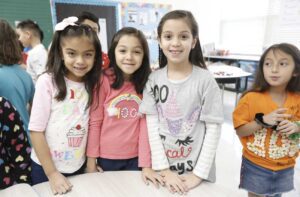
In contrast to teacher led instruction, project-based learning encourages student engagement, collaboration, and problem-solving, empowering students to become active participants in their own learning. Students collaborate to solve a real world problem that requires content knowledge, critical thinking, creativity, and communication skills.
Students aren’t only assessed on their understanding of academic content but on their ability to successfully apply that content when solving authentic problems. Through this process, project-based learning gives students the opportunity to develop the real-life skills required for success in today’s world.
Positive Impacts of Project-Based Learning
By integrating project-based learning into the classroom, educators can unlock a multitude of benefits for students. The research evidence overwhelmingly supports the positive impact of PBL on students, teachers, and school communities. According to numerous studies (see Deutscher et al, 2021 ; Duke et al, 2020 ; Krajick et al, 2022 ; Harris et al, 2015 ) students in PBL classrooms not only outperform non-PBL classrooms academically, such as on state tests and AP exams, but also the benefits of PBL extend beyond academic achievement, as students develop essential skills, including creativity, collaboration, communication, and critical thinking. Additional studies documenting the impact of PBL on K-12 learning are available in the PBL research annotated bibliography on the New Tech Network website.
New Tech Network Project-Based Learning Impacts
Established in 1996, New Tech Network NTN is a leading nonprofit organization dedicated to transforming teaching and learning through innovative instructional practices, with project-based learning at its core.
NTN has an extensive network of schools across the United States that have embraced the power of PBL to engage students in meaningful, relevant, and challenging projects, with professional development to support teachers in deepening understanding of “What is project-based learning?” and “How can we deliver high quality project-based learning to all students?”
With over 20 years of experience in project-based learning, NTN schools have achieved impactful results. Several research studies documented that students in New Tech Network schools outperform their peers in non-NTN schools on SAT/ACT tests and state exams in both math and reading (see Hinnant-Crawford & Virtue, 2019 ; Lynch et al, 2018 ; Stocks et al, 2019 ). Additionally, students in NTN schools are more engaged and more likely to develop skills in collaboration, agency, critical thinking, and communication—skills highly valued in today’s workforce (see Ancess & Kafka, 2020 ; Muller & Hiller, 2020 ; Zeiser, Taylor, et al, 2019 ).
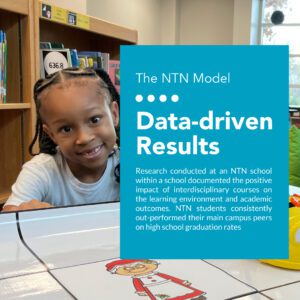
NTN provides comprehensive support to educators, including training, resources, and ongoing coaching, to ensure the effective implementation of problem-based learning and project-based learning. Through their collaborative network, NTN continuously shares best practices, fosters innovation, enables replication across districts, and empowers educators to create transformative learning experiences for their students (see Barnett et al, 2020 ; Hernández et al, 2019 ).
Key Concepts of Project-Based Learning
Project-based learning is rooted in several key principles that distinguish it from other teaching methods. The pedagogical theories that underpin project-based learning and problem-based learning draw from constructivism and socio-cultural learning. Constructivism posits that learners construct knowledge through active learning and real world applications. Project-based learning aligns with this theory by providing students with opportunities to actively construct knowledge through inquiry, hands-on projects, real-world contexts, and collaboration.
Students as active participants
Project-based learning is characterized by learner-centered, inquiry-based, real world learning, which encourages students to take an active role in their own learning. Instead of rote memorization of information, students engage in meaningful learning opportunities, exercise voice and choice, and develop student agency skills. This empowers students to explore their interests, make choices, and take ownership of their learning process, with teachers acting as facilitators rather than the center of instruction.
Real-world and authentic contexts
Project-based learning emphasizes real-world problems that encourage students to connect academic content to meaningful contexts, enabling students to see the practical application of what they are learning. By tackling personally meaningful projects and engaging in hands-on tasks, students develop a deeper understanding of the subject matter and its relevance in their lives.
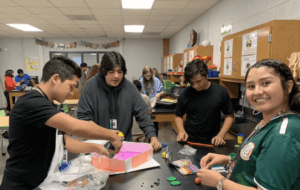
Collaboration and teamwork
Another essential element of project-based learning is collaborative work. Students collaborating with their peers towards the culmination of a project, mirrors real-world scenarios where teamwork and effective communication are crucial. Through collaboration, students develop essential social and emotional skills, learn from diverse perspectives, and engage in constructive dialogue.
Project-based learning embodies student-centered learning, real-world relevance, and collaborative work. These principles, rooted in pedagogical theories like constructivism, socio-cultural learning, and experiential learning, create a powerful learning environment, across multiple academic domains, that foster active engagement, thinking critically, and the development of essential skills for success in college or career or life beyond school.
A Unique Approach to Project-Based Learning: New Tech Network
New Tech Network schools are committed to these key focus areas: college and career ready outcomes, supportive and inclusive culture, meaningful and equitable instruction, and purposeful assessment.
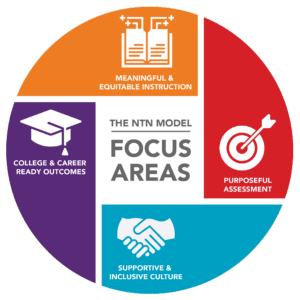
In the New Tech Network Model, rigorous project-based learning allows students to engage with material in creative, culturally relevant ways, experience it in context, and share their learning with peers.
Why Undertake this Work?
Teachers, administrators, and district leaders undertake this work because it produces critical thinkers, problem-solvers, and collaborators who are vital to the long-term health and wellbeing of our communities.
Reynoldsburg City Schools (RCS) Superintendent Dr. Melvin J. Brown observed that “Prior to (our partnership with New Tech Network) we were just doing the things we’ve always done, while at the same time, our local industry was evolving and changing— and we were not changing with it. We recognized we had to do better to prepare kids for the reality they were going to walk into after high school and beyond.
Students embrace the Model because they feel a sense of belonging. They are challenged to learn in relevant, meaningful ways that shape the way they interact with the world, like these students from Owensboro Innovation Academy in Owensboro, Kentucky .
When change is collectively held and supported rather than siloed, and all stakeholders are engaged rather than alienated, schools and districts build their own capacity to sustain innovation and continuously improve. New Tech Network’s approach to change provides teachers, administrators, and district leaders with clear roles in adopting and adapting student-centered learning.
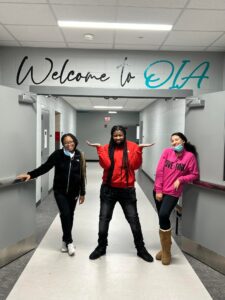
Part of NTN’s process for equipping schools with the data they need to serve their students involves conducting research surveys about their student’s experiences.
“The information we received back from our NTN surveys about our kids’ experiences was so powerful,” said Amanda Ziaer, Managing Director of Strategic Initiatives for Frisco ISD. “It’s so helpful to be reminded about these types of tactics when you’re trying to develop an authentic student-centered learning experience. It’s just simple things you might skip because we live in such a traditional adult-centered world.”
NTN’s experienced staff lead professional development activities that enable educators to adapt to student needs and strengths, and amplify those strengths while adjusting what is needed to address challenges.
Meaningful and Equitable Instruction
The New Tech Network model is centered on a PBL instructional core. PBL as an instructional method overlaps with key features of equitable pedagogical approaches including student voice, student choice, and authentic contexts. The New Tech Network model extends the power of PBL as a tool for creating more equitable learning by building asset-based equity pedagogical practices into the the design using key practices drawn from the literature on culturally sustaining teaching methods so that PBL instruction leverages the assets of diverse students, supports teachers as warm demanders, and develops critically conscious students in PBL classrooms (see Good teaching, warm and demanding classrooms, and critically conscious students: Measuring student perceptions of asset-based equity pedagogy in the classroom ).
Examples of Project-Based Learning
New Tech Network schools across the country create relevant projects and interdisciplinary learning that bring a learner-centered approach to their school. Examples of NTN Model PBL Projects are available in the NTN Help and Learning Center and enable educators to preview projects and gather project ideas from various grade levels and content areas.
The NTN Project Planning Toolkit is used as a guide in the planning and design of PBL. The Project-based learning examples linked above include a third grade Social Studies/ELA project, a seventh grade Science project, and a high school American Studies project (11th grade English Language Arts/American History).
The Role of Technology in Project-Based Learning
A tool for creativity
Technology plays a vital role in enhancing PBL in schools, facilitating student engagement, collaboration, and access to information. At the forefront, technology provides students with tools and resources to research, analyze data, and create multimedia content for their projects.
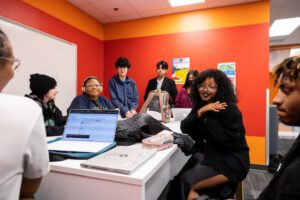
A tool for collaboration
Technology tools enable students to express their understanding creatively through digital media, such as videos, presentations, vlogs, blogs and interactive websites, enhancing their communication and presentation skills.
A tool for feedback
Technology offers opportunities for authentic audiences and feedback. Students can showcase their projects to a global audience through online platforms, blogs, or social media, receiving feedback and perspectives from beyond the classroom. This authentic audience keeps students engaged and striving for high-quality work and encourages them to take pride in their accomplishments.
By integrating technology into project-based learning, educators can enhance student engagement, deepen learning, and prepare students for a digitally interconnected world.
Interactive PBL Resources
New Tech Network offers a wealth of resources to support educators in gaining a deeper understanding of project-based learning. One valuable tool is the NTN Help Center, which provides comprehensive articles and resources on the principles and practices of implementing project-based learning.
Educators can explore project examples in the NTN Help Center to gain inspiration and practical insights into designing and implementing PBL projects that align with their curriculum and student needs.
Educators can start with the article “ What are the basic principles and practices of Project-Based Learning? Doing Projects vs. PBL . ” The image within the article clarifies the difference between the traditional education approach of “doing projects” and true project-based learning.
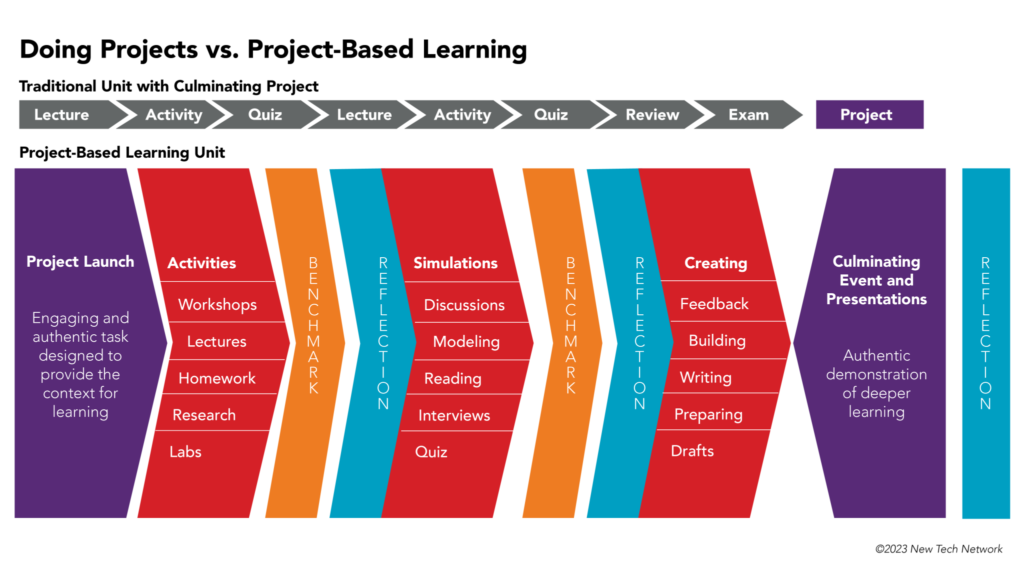
Project Launch
Students are introduced to a project by an Entry Event in the Project Launch (designated in purple on the image) this project component typically requires students to take on a role beyond that of ‘student’ or ‘learner’. This occurs either by placing students in a scenario that has real world applications, in which they simulate tasks performed by adults and/or by requiring learners to address a challenge or problem facing a particular community group.
The Entry Event not only introduces students to a project but also serves as the “hook” that purposefully engages students in the launch of a project. The Entry Event is followed by the Need to Know process in which students name what they already know about a topic and the project ask and what they “need to know” in order to solve the problem named in the project. Next steps are created which support students as they complete the Project Launch phase of a project.
Scaffolding
Shown in the image in red, facilitators ensure students gain content knowledge and skills through ‘scaffolding’. Scaffolding is defined as temporary supports for students to build the skills and knowledge needed to create the final product. Similar to scaffolding in building construction, it is removed when these supports are no longer needed by students.
Scaffolding can take the form of a teacher providing support by hosting small group workshops, students engaging in independent research or groups completing learner-centered activities, lab investigations, formative assessments and more.

Benchmarks (seen in orange in the image) can be checks for understanding that allow educators to give feedback on student work and/or checks to ensure students are progressing in the project as a team. After each benchmark, students should be given time to reflect on their individual goals as well as their team goals. Benchmarks are designed to build on each other to support project teams towards the culminating product at the end of the project.
NTN’s Help Center also provides resources on what effective teaching and learning look like within the context of project-based learning. The article “ What does effective teaching and learning look like? ” outlines the key elements of a successful project-based learning classroom, emphasizing learner-centered learning, collaborative work, and authentic assessments.
Educators can refer to this resource to gain insights into best practices, instructional strategies, and classroom management techniques that foster an engaging and effective project-based learning environment.
From understanding the principles and practices of PBL to accessing examples of a particular project, evaluating project quality, and exploring effective teaching and learning strategies, educators can leverage these resources to enhance their PBL instruction and create meaningful learning experiences for their students.
Preparing Students for the Future with PBL
The power of PBL is the way in which it encourages students to think critically, collaborate, and sharpen communication skills, which are all highly sought-after in today’s rapidly evolving workforce. By engaging in authentic, real-world projects, and collaborating with business and community leaders and community members, students develop the ability to tackle complex problems, think creatively, and adapt to changing circumstances.
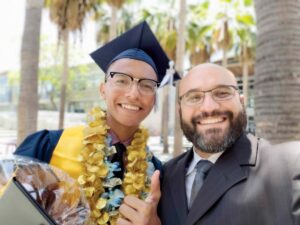
These skills are essential in preparing students for the dynamic and unpredictable nature of the future job market, where flexibility, innovation, and adaptability are paramount.
“Joining New Tech Network provides us an opportunity to reframe many things about the school, not just PBL,” said Bay City Public Schools Chief Academic Officer Patrick Malley. “Eliminating the deficit mindset about kids is the first step to establishing a culture that makes sure everyone in that school is focused on next-level readiness for these kids.”
The New Tech Network Learning Outcomes align with the qualities companies are looking for in new hires: Knowledge and Thinking, Oral Communication, Written Communication, Collaboration and Agency.
NTN schools prioritize equipping students with the necessary skills and knowledge to pursue postsecondary education or training successfully. By integrating college readiness and career readiness into the fabric of PBL, NTN ensures that students develop the academic, technical, and professional skills needed for future success.
Through authentic projects, students learn to engage in research, analysis, and presentation of their work, mirroring the expectations and demands of postsecondary education and the workplace. NTN’s commitment to college and career readiness ensures that students are well-prepared to transition seamlessly into higher education or enter the workforce with the skills and confidence to excel in their chosen paths.

The Impact of PBL on College and Career Readiness
PBL has a profound impact on college and career readiness. Numerous studies document the academic benefits for students, including performance in AP courses, SAT/ACT tests, and state exams (see Deutscher et al, 2021 ; Duke et al, 2020 ; Krajick et al, 2022 ; Harris et al, 2015 ). New Tech Network schools demonstrate higher graduation rates and college persistence rates than the national average as outlined in the New Tech Network 2022 Impact Report . Over 95% of NTN graduates reported feeling prepared for the expectations and demands of college.
Practices that Support Equitable College Access and Readiness
According to a literature review conducted by New York University’s Metropolitan Center for Research on Equity and the Transformation of Schools ( Perez et al, 2021 ) classroom level, school level, and district level practices can be implemented to create more equitable college access and readiness and these recommendations align with many of the practices built into the the NTN model, including culturally sustaining instructional approaches, foundational literacy, positive student-teacher relationships, and developing shared asset-based mindsets.
About New Tech Network
New Tech Network is committed to meeting schools and districts where they are and helping them achieve their vision of student success. For a full list of our additional paths to impact or to speak with someone about how the NTN Model can make an impact in your district, please send an email to [email protected] .
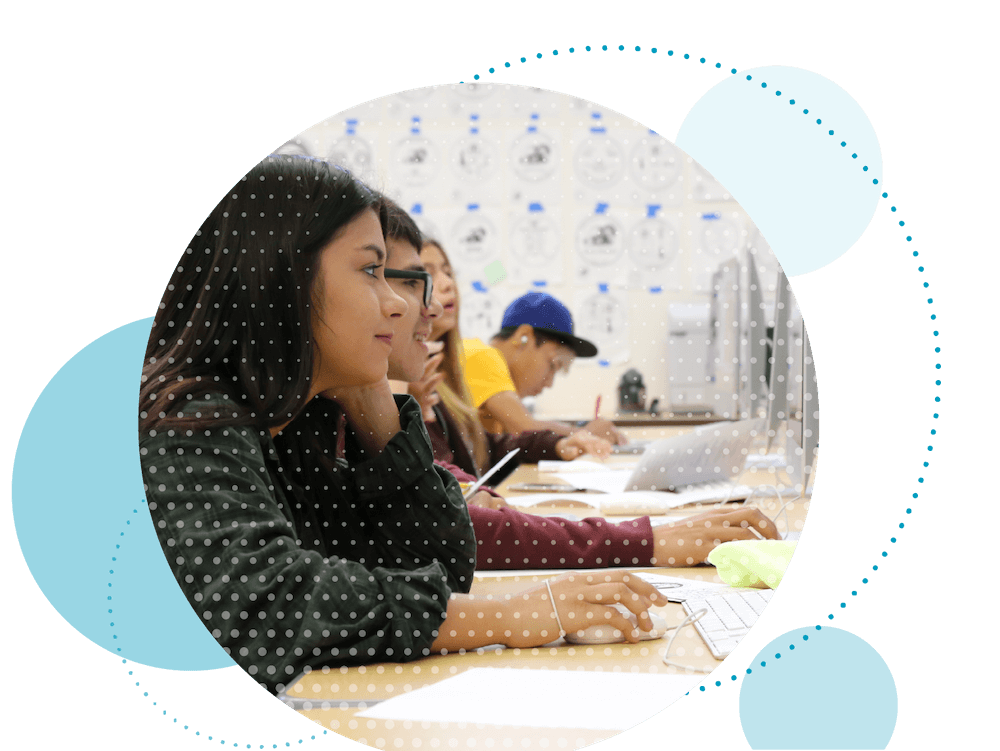
Sign Up for the NTN Newsletter
Project and Problem-Based Teaching and Learning
- First Online: 09 September 2020
Cite this chapter

- Michael R. L. Odell 3 &
- Jaclyn L. Pedersen 4
Part of the book series: Springer Texts in Education ((SPTE))
18k Accesses
1 Citations
1 Altmetric
In recent years, there has been a movement to align inquiry-based pedagogies with 21st century skills and the workplace. Since the 1950’s, calls for education reform have often been in response to historical events or the release of reports such as A Nation at Risk or more recently Rising Above the Gathering Storm. Sputnik was launched in 1957 causing US policymakers to rethink science education. This led to a number of innovative curriculum reform models designed in the 1960’s and revised during the 1970’s including Science- A Process Approach (SAPA), the Science Curriculum Improvement Study (SCIS) and the Elementary Science Study (ESS). These inquiry-based curricula served as a model for future development. Since the 1980’s and the development of the National Science Education Standard ( 1996 . National science education standards . Washington, DC: The National Academies Press. https://doi.org/10.17226/4962 ) and more recently the replacement with Next Generation Science Standards (2013) there has been significant support for learning STEM through inquiry. Although there are a number of inquiry-based pedagogies, this chapter addresses project-based learning (PBL) and problem-based learning (PrBL) as primary pedagogies for many schools seeking to engage students in STEM in an authentic environment. In the STEM context, PBL is well suited as a primary pedagogy for STEM learning. PrBL is also widely utilized in STEM education and may have advantages over PBL in the mathematics classroom setting. There are relatively few schools engaged in PBL/PrBLwhen compared to schools using traditional instructional approaches. PBL/PrBL may be an effective strategy to reform schools to meet the 21st century learning needs of the students they serve. What are the differences between PBL/PrBL? What are the barriers to implementing both as a primary classroom pedagogy? What teacher supports facilitate effective PBL/PrBL in the classroom? What can teacher preparation programs do to prepare new teachers to use PBL/PrBL? This chapter examines these two related inquiry-based pedagogies in the context of 21st century learning and developing schools, and provides recommendations for supports that foster them.
This is a preview of subscription content, log in via an institution to check access.
Access this chapter
- Available as PDF
- Read on any device
- Instant download
- Own it forever
- Available as EPUB and PDF
- Compact, lightweight edition
- Dispatched in 3 to 5 business days
- Free shipping worldwide - see info
Tax calculation will be finalised at checkout
Purchases are for personal use only
Institutional subscriptions
Boss, S., Johanson, C., Arnold, S. D., Parker, W. C., Nguyen, D., Mosborg, S., Nolen, S., Valencia, S., Vye, N., & Bransford, J. (2011). The quest for deeper learning and engagement in advanced high school courses. The Foundation Review , 3 (3), Article 3.
Google Scholar
Boud, D., & Feletti, G. (1997). The challenge of problem-based learning (2nd ed.). London: Kogan Page.
Bransford, J., Brown, A. L., Cocking, R. R., & National Research Council (US). (1999). How people learn: Brain, mind, experience, and school . Washington, D.C: National Academy Press.
Bybee, R. W., & Fuchs, B. (2006). Preparing the 21st century workforce: A new reform in science and technology education. Journal of Research in Science Teaching, 43 (4), 349–352. Retrieved from http://onlinelibrary.wiley.com/doi/10.1002/tea.20147/epdf .
Condliffe, B., Quint, J., Visher, M. G., Bangser, M. R., Drohojowska, S., Saco, L., & Nelson, E. (2017). Project-based learning a literature review working paper. MDRC. Retrieved from https://s3-us-west-1.amazonaws.com/ler/MDRC+PBL+Literature+Review.pdf .
Dewey, J. (1897). Education today: My pedagogical creed . New York: Putnam.
Dewey, J. (1938): Experience and education. In J. A. Boydston & S. M. Cahn, John Dewey: The later works of John Dewey, 1925–1953: 1938–1939/Experience and Education, Freedom and Culture, Theory of Valuation, and Essays, vol. 13 (pp. 1–62). Carbondale: Southern Illinois University Press.
Hmelo-Silver, C. E. (2004). Problem-based learning: What and how do students learn? Educational Psychology Review , 16 (3), 235–266. Retrieved from https://link.springer.com/article/10.1023/B:EDPR.0000034022.16470.f3 .
Hutchings, B., & O’Rourke, K. (2004). Medical studies to literary studies: Adapting paradigms of problem-based learning process for new disciplines. In M. Savin-Baden & K. Wilkie (Eds.), Challenging research in problem based learning (pp. 174–189). SRHE & OUP: Berkshire, UK.
Morris, C. D., Bransford, J. D., & Franks, J. J. (1977). Levels of processing versus transfer appropriate processing. Journal of Verbal Learning and Verbal Behavior, 16 (5), 519–533.
Article Google Scholar
National of Academy of Sciences, National Academy of Engineering, & Institute of Medicine. (2007). Rising above the gathering storm: Energizing and employing America for a brighter economic future. Washington, DC: The National Academic Press. Retrieved from https://www.nap.edu/catalog/11463/rising-above-the-gathering-storm-energizing-and-employing-america-for .
National Research Council. (2000). Inquiry and the National science education standards. Washington, DC: National Academy Press.
National Research Council. (1996). National science education standards . Washington, DC: The National Academies Press. https://doi.org/10.17226/4962 .
National Research Council. (2012). A framework for K–12 science education: Practices, crosscutting concepts, and core ideas . Washington, DC: National Academies Press.
National Science Teachers Association. (2011). Quality science education and 21st century skills . Retrieved from http://www.nsta.org/about/positions/21stcentury.aspx .
Next Generation Science Storylines & STEM Teaching Tools. (2016). Using phenomena in NGSS-designed lessons and units, (Achieve). Seattle, WA: STEM Teaching Tools, Institute for Science and Math Education, University of Washington.
Partnership for 21st Century Skills. (2015). P21 framework definitions . Retrieved from http://www.p21.org/storage/documents/docs/P21_Framework_Definitions_New_Logo_2015.pdf .
Pérez, M., & Romero, P. (2014). Secondary STEM teacher preparation as a top priority for the university of the future. The Journal of the World Universities Forum, 6 (4), 21–36.
Strobel, J., & van Barneveld, A. (2009). When is PBL more effective? A meta-synthesis of meta-analyses comparing PBL to conventional classrooms. Interdisciplinary Journal of Problem-Based Learning , 3 (1). Retrieved from https://doi.org/10.7771/1541-5015.1046 .
Texas Education Agency. (2018). Texas science, technology, engineering, and mathematics initiative (T-STEM) . Retrieved from https://tea.texas.gov/T-STEM/ .
Texas High School Project. (2010). Texas science technology engineering and mathematics academies design blueprint, rubric, and glossary . Austin, TX: Texas Education Agency.
Trilling, B., & Fadel, C. (2009). 21st century skills learning for life in our times . San Francisco, CA: Wiley.
United States. National Commission on Excellence in Education. Department of Education. (1983). A nation at risk: The imperative for educational reform: A report to the Nation and the Secretary of Education, United States Department of Education. Washington, D.C.:The Commission: [Supt. of Docs., U.S. G.P.O. distributor].
Walker, A., & Leary, H. (2009). A problem based learning meta analysis: Differences across problem types, implementation types, disciplines, and assessment levels. Interdisciplinary Journal of Problem-Based Learning , 3 (1). Retrieved from https://doi.org/10.7771/1541-5015.1061 .
Download references
Author information
Authors and affiliations.
College of Education and Psychology, College of Engineering, University of Texas at Tyler, Tyler, TX, USA
Michael R. L. Odell
College of Education and Psychology, University of Texas at Tyler University Academy, Tyler, TX, USA
Jaclyn L. Pedersen
You can also search for this author in PubMed Google Scholar
Corresponding author
Correspondence to Michael R. L. Odell .
Editor information
Editors and affiliations.
Science Teachers Association of Nigeria, Abuja, Nigeria
University of Texas at Tyler, Tyler, TX, USA
Teresa J. Kennedy
Rights and permissions
Reprints and permissions
Copyright information
© 2020 Springer Nature Switzerland AG
About this chapter
Odell, M.R.L., Pedersen, J.L. (2020). Project and Problem-Based Teaching and Learning. In: Akpan, B., Kennedy, T.J. (eds) Science Education in Theory and Practice. Springer Texts in Education. Springer, Cham. https://doi.org/10.1007/978-3-030-43620-9_23
Download citation
DOI : https://doi.org/10.1007/978-3-030-43620-9_23
Published : 09 September 2020
Publisher Name : Springer, Cham
Print ISBN : 978-3-030-43619-3
Online ISBN : 978-3-030-43620-9
eBook Packages : Education Education (R0)
Share this chapter
Anyone you share the following link with will be able to read this content:
Sorry, a shareable link is not currently available for this article.
Provided by the Springer Nature SharedIt content-sharing initiative
- Publish with us
Policies and ethics
- Find a journal
- Track your research
Project-Based Learning
This teaching guide explores the different types of project-based learning (PBL), its benefits, and tips for implementation in your classes.
Introduction
Project-based learning (PBL) involves students designing, developing, and constructing hands-on solutions to a problem. The educational value of PBL is that it aims to build students’ creative capacity to work through difficult or ill-structured problems, commonly in small teams. Typically, PBL takes students through the following phases or steps:
- Identifying a problem
- Agreeing on or devising a solution and potential solution path to the problem (i.e., how to achieve the solution)
- Designing and developing a prototype of the solution
- Refining the solution based on feedback from experts, instructors, and/or peers
Depending on the goals of the instructor, the size and scope of the project can vary greatly. Students may complete the four phases listed above over the course of many weeks, or even several times within a single class period.
Because of its focus on creativity and collaboration, PBL is enhanced when students experience opportunities to work across disciplines, employ technologies to make communication and product realization more efficient, or to design solutions to real-world problems posed by outside organizations or corporations. Projects do not need to be highly complex for students to benefit from PBL techniques. Often times, quick and simple projects are enough to provide students with valuable opportunities to make connections across content and practice.
Implementing project-based learning
As a pedagogical approach, PBL entails several key processes:
- Defining problems in terms of given constraints or challenges
- Generating multiple ideas to solve a given problem
- Prototyping — often in rapid iteration — potential solutions to a problem
- Testing the developed solution products or services in a “live” or authentic setting.
Defining the problem
PBL projects should start with students asking questions about a problem. What is the nature of problem they are trying to solve? What assumptions can they make about why the problem exists? Asking such questions will help students frame the problem in an appropriate context. If students are working on a real-world problem, it is important to consider how an end user will benefit from a solution.
Generating ideas
Next, students should be given the opportunity to brainstorm and discuss their ideas for solving the problem. The emphasis here is not to generate necessarily good ideas, but to generate many ideas. As such, brainstorming should encourage students to think wildly, but to stay focused on the problem. Setting guidelines for brainstorming sessions, such as giving everyone a chance to voice an idea, suspending judgement of others’ ideas, and building on the ideas of others will help make brainstorming a productive and generative exercise.
Prototyping solutions
Designing and prototyping a solution are typically the next phase of the PBL process. A prototype might take many forms: a mock-up, a storyboard, a role-play, or even an object made out of readily available materials such as pipe cleaners, popsicle sticks, and rubber bands. The purpose of prototyping is to expand upon the ideas generated during the brainstorming phase, and to quickly convey a how a solution to the problem might look and feel. Prototypes can often expose learners’ assumptions, as well as uncover unforeseen challenges that an end user of the solution might encounter. The focus on creating simple prototypes also means that students can iterate on their designs quickly and easily, incorporate feedback into their designs, and continually hone their problem solutions.
Students may then go about taking their prototypes to the next level of design: testing. Ideally, testing takes place in a “live” setting. Testing allows students to glean how well their products or services work in a real setting. The results of testing can provide students with important feedback on the their solutions, and generate new questions to consider. Did the solution work as planned? If not, what needs to be tweaked? In this way, testing engages students in critical thinking and reflection processes.
Unstructured versus structured projects
Research suggests that students learn more from working on unstructured or ill-structured projects than they do on highly structured ones. Unstructured projects are sometimes referred to as “open ended,” because they have no predictable or prescribed solution. In this way, open ended projects require students to consider assumptions and constraints, as well as to frame the problem they are trying to solve. Unstructured projects thus require students to do their own “structuring” of the problem at hand – a process that has been shown to enhance students’ abilities to transfer learning to other problem solving contexts.
Using Design Thinking in Higher Education (Educause)
Design Thinking and Innovation (GSM SI 839)
Project Based Learning through a Maker’s Lens (Edutopia)
You may also be interested in:
Case-based learning, game-based learning & gamification, creativity & innovation hub guide, udl learning community 2023, safety, curiosity, and the joy of learning, student engagement part 2: ensuring deep learning, jump-starting discussion using images (part 2), assessing learning.
Project-Based Learning
Table of contents.
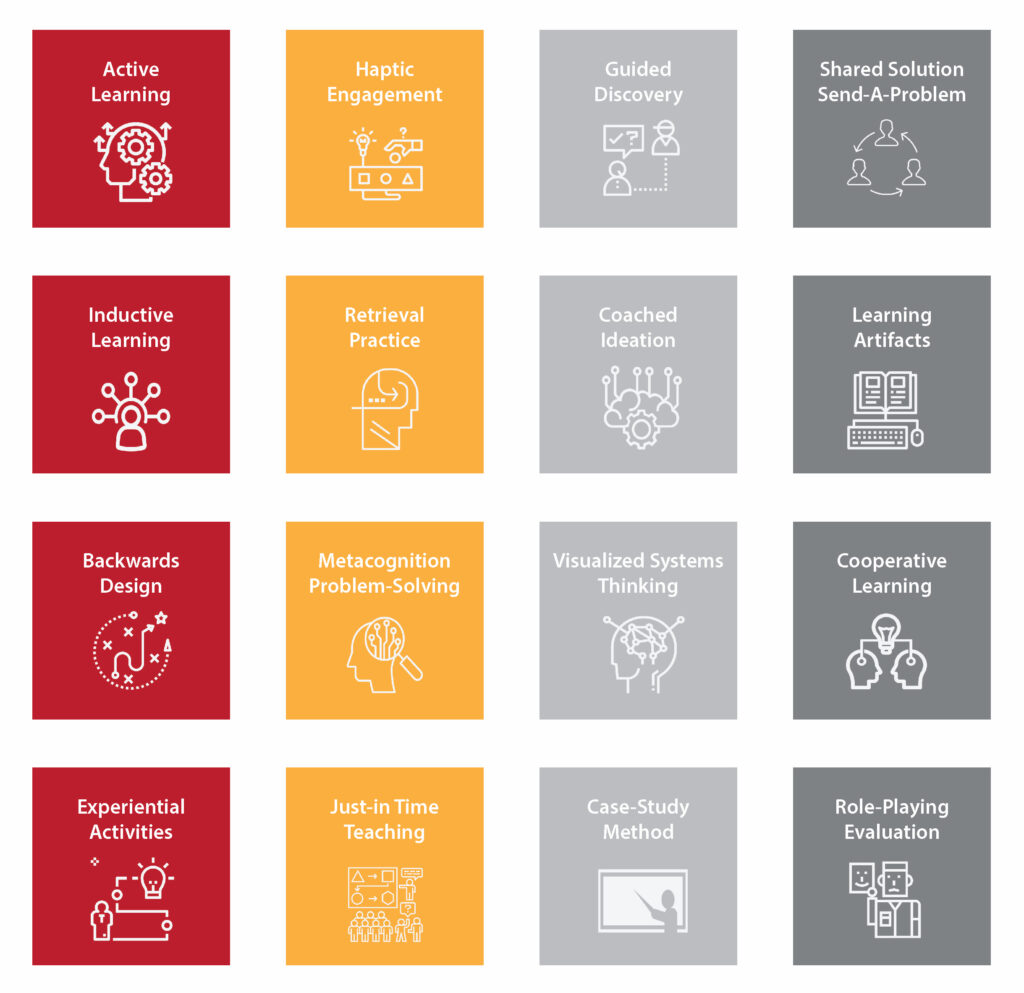
Explore 16 Project-Based Learning Strategies
Project-Based learning (PBL) is an ideal teaching format for inquisitive learners and complex problems. Consider the difficulty in trying to address these following questions using traditional course activities:
- Who benefits from renewable energy initiatives?
- How are public health issues related to building design?
- When does water security become problematic—and for whom?
- What are food safety laws worth fighting for today?
In PBL courses, students can embrace the multiplicity of considerations found in these questions. They discover, develop, test, and present their work through various stages of activity—they learn by doing.
What is Project-Based Learning (PBL)?
Project-Based learning (PBL) is a high-impact educational practice ideal for all disciplines that hope to develop deeper engagement in real-world challenges. PBL cultivates a range of skills, stimulates innovative activities, and forges meaningful collaborations and connections across content areas. PBL uses an inductive teaching method in which relevant, authentic, and realistic problems become the framework for course content and activities. This multi-stage process offers students choice and agency to explore multiple learning pathways and potential solutions. With the instructor’s navigational assistance, students learn by exploring, finding unique ways to answer questions, and solving problems through self-directed activities and public presentations.
In PBL courses, students complete various performance tasks that demonstrate that knowledge, understanding, and proficiency through tangible products or performances. Formative learning experiences, focused on the application of knowledge, occur throughout—problem-solving is the key to this type of knowledge acquisition. The format develops the students’ ability to think critically, creatively, and productively about a problem, while also nurturing team skills. These meaningful experiences help students connect more deeply with the material while improving their enthusiasm and engagement with the work.
What is the difference between a “Project” and Project-Based Learning?
Many courses routinely include “projects” as part of their course assignments. Projects are typically teacher-directed, highly-structured, summative, exercises with clear answers: “Size this beam” or “Develop a market report.” Whereas a Project-Based learning approach uses more of an open-ended, inquiry-based approach to problem-solving: “What are the most effective attributes of a sustainable building?” “How can literature be a vehicle for social change?” When problem-solving is the primary goal of the course, this method is also called Problem-based learning.
PBL routinely uses creative thinking, problem-solving, production, and performance are the natural focus of instruction, but it’s useful for nearly every discipline. PBL makes connections between disciplinary boundaries more apparent. For example, a PBL course that studies water quality will need to consider how to synthesize considerations from several sciences, business, public health issues, etc. to best understand the problem.
Common characteristics of PBL
PBL is flexible and adaptable because of the learning scaffolding around a central research question. There are several characteristics project-based learning courses must have:
- Driving Question: The work centers around a fundamental inquiry that instills a “Need to Know.” This problem must be challenging, meaningful, and not quickly answered.
- Authenticity and Significance: Projects based on authentic and real-world challenges have significance to the students, teachers, and community.
- Voice and Choice: Projects are student-centered, with instructors serving as facilitators that offer formative guidance. Engagement and enthusiasm develop with student investment in the project outcome.
- Sustained Inquiry: Students learn various ways to investigate and improve the work. The integration of multiple scales of inquiry occurs as skills and knowledge build upon each other in the investigation, production, and reflection/feedback.
- Ideation and Innovation: Students cultivate learning through the creation of artifacts, reports, visualizations that address the inquiry; doing so creates ownership of knowledge.
- Evaluation and Reiteration: Students demonstrate knowledge through genuine applications that align with course objectives; reflection, assessment, and assessment of efficacy are central objectives.
- Production & Presentations: Students produce summative work shared with others; this process cements the learning as students determine how to communicate the value of their efforts and inquiries.
- Cooperative Learning: Students learn to collaborate and communicate in a practice-based model of cooperation.
Research has shown the effectiveness of this approach on student engagement, skill-development, communication, and content retention, mainly when the Kolb Model of experiential learning is employed.
One of the benefits of the PBL model is the ease in which various teaching techniques integrated into the course activities: case studies, role-playing, just-in-time teaching, visualization techniques for systems thinking, and coached problem-solving, and guided discovery problems. Team-Based Learning and other collaborative learning techniques that integrated into PBL activities; these group activities create opportunities for additional improvements in retention and soft-skill building. The process inherently combines the four Cs of 21st Century learning: Critical Thinking, Communication, Collaboration, and Creativity .
Project-Based Learning at Iowa State University
There as several factors particular to Iowa State University that drive our use of project-based learning: Our Land-Grant mission compels innovative and practical course work with an emphasis on applied-learning—particularly for a new generation of learners. As our courses and on-going research work continue to confront the vexing global challenges through multi-disciplinary efforts, we’ll need an educational approach that values and promotes collaborative working skills and meaningful experiences. And finally, the creative problem-solving and collaborative educational efforts found in a PBL approach can nurture the vibrant ecosystem of innovation and entrepreneurship that defines Iowa State University.
Iowa State University’s Strategic Plan (2017-2022) recommends that all students participate in at least two high-impact practices in their education, ideally one in their first year and another within the context of their major. Project-based learning offers an opportunity to expand student access to high-impact practices without significant changes in the curriculum. Regularly throughout the year, thousands of students participate in project-based activities from entry-level through their capstone projects. Examples of this work are pervasive in certain student club activities and our thriving community-engagement / service-learning efforts.
Problem-based learning and project-based learning
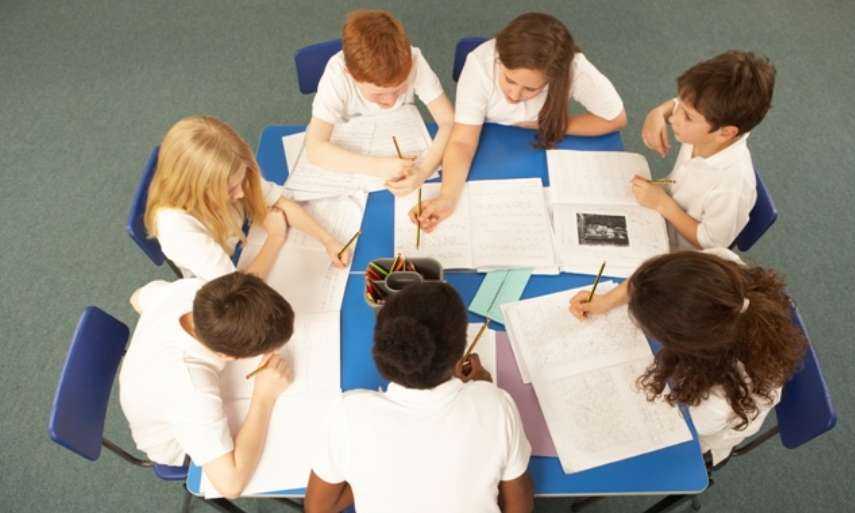
Both problem-based learning and project-based learning are referred to as PBL, and some find it confusing to separate the two pedagogies.
So, what is the difference?
Problem-based learning originated in the 1960s and is a teaching pedagogy that is student-centred. Students learn about a topic through the solving of problems and generally work in groups to solve the problem where, often, there is no one correct answer. In short, ‘it empowers learners to conduct research, integrate theory and practice, and apply knowledge and skills to develop a viable solution to a defined problem,’ (Savery, 2006).
Project-based learning has its origins back in the work of John Dewey and William Kilpatrick and dates back to 1918 when the term was first used ( Edutopia , 2014). Project-based learning is an instructional approach where students learn by investigating a complex question, problem or challenge. It promotes active learning, engages students, and allows for higher order thinking (Savery, 2006). Students explore real-world problems and find answers through the completion of a project. Students also have some control over the project they will be working on, how the project will finish, as well as the end product.
The differences
The difference between problem-based learning and project-based learning is that students who complete problem-based learning often share the outcomes and jointly set the learning goals and outcomes with the teacher. On the other hand, project-based learning is an approach where the goals are set. It is also quite structured in the way that the teaching occurs.
Project-based learning is often multidisciplinary and longer, whereas problem based learning is more likely to be a single subject and shorter. Generally, project-based learning follows general steps while problem-based learning provides specific steps. Importantly, project-based learning often involves authentic tasks that solve real-world problems while problem-based learning uses scenarios and cases that are perhaps less related to real life (Larmer, 2014).
In conclusion, it is probably the importance of conducting active learning with students that is worthy and not the actual name of the task. Both problem-based and project-based learning have their place in today’s classroom and can promote 21st Century learning.
Larmer, J. (2014). Project-based learning vs. problem-based learning vs. X-BL. Retrieved from http://www.edutopia.org/blog/pbl-vs-pbl-vs-xbl-john-larmer
Savery, J. R. (2006). Overview of problem-based learning: Definitions and distinctions. Interdisciplinary Journal of Problem-based Learning, 1 (1). Retrieved from http://dx.doi.org/10.7771/1541-5015.1002
Further information also available at:
Leggett, A. (2014). Active learning pedagogies: Problem-based learning. Retrieved from http://www.uq.edu.au/tediteach/flipped-classroom/problem-bl.html
Have you used project-based learning or problem-based learning in your classroom?
What activities did you use to engage the students?
Was there any evidence to suggest that students were more engaged?
Related articles

- Our Mission
Connecting Across Disciplines in PBL
Here are three ways to set up project-based learning that involves more than one subject area, which is highly engaging for students.

When seventh-grade students in Alexandria, Virginia, noticed mushrooms growing from under the baseboard in their classroom, their curiosity launched them and teacher Mary Breslin on an investigation into the causes and health effects of mold and fungus in school buildings.
After presenting their findings at a science fair, students wanted to keep working on policy solutions. That meant shifting their focus to learn in depth about how government works and, eventually, lobby their state legislature to pass a bill . Without a deep understanding of both science and social studies, and the ability to connect them, students could not have achieved the same results.
Their experience, one of many examples that education leader Ken Kay and I share in Redefining Student Success , shows what students can accomplish when they tackle real-world problems. It also underscores a challenge that teachers may face when projects don’t fit neatly into content silos.
Interdisciplinary learning can seem like a barrier for teachers who feel constrained by time, a prescribed curriculum, or a lack of opportunities to work with teachers from other disciplines. But the benefits can be profound , from increased engagement to academic gains.
When students confront real-world problems, in school now or later in life, they may need more than one set of disciplinary lenses to see a complex issue or design a solution. Experts from Harvard Project Zero argue that addressing today’s most pressing issues—from environmental to social to economic—will require synthesizing knowledge from disparate sources.
A Continuum for Connecting
To help teachers think outside content silos when designing projects, I encourage them to start with problems that matter to students. A good prompt to encourage student brainstorming is “What’s a problem you care about that adults haven’t solved yet?” Thinking about the knowledge and skills essential to tackle a problem will lead to content goals, an important step in aligning projects to standards.
What if key learning goals are outside a teacher’s comfort zone or don’t fit into their planned curriculum? Instead of scaling back the project to fit a single content area, teachers can connect across disciplines with this continuum of connections: All-In , Just in Time , or the Handoff .
All-In: In this approach, significant learning goals for two or more content areas are incorporated in the same project. Elementary teachers can connect across content areas by bringing existing structures, such as literacy stations or math rotations, into project design in meaningful ways. ( This video from PBLWorks offers a good example.)
The All-In approach is routine in schools designed for teaming (as in these examples from High Tech High) or in interdisciplinary courses like Humanities or Environmental Economics.
Some teachers create opportunities to connect across content areas even without formal structures for teaming or dedicated time for planning with colleagues. Here’s an example of an engaging project with clear learning goals for English language arts and history that grew out of two teachers’ shared interest in podcasting. Regular check-ins, common deadlines, and shared strategies for assessment will keep the project on track.
Just in Time: Some projects focus primarily on one content area but bring in strategies from another discipline “just in time” for students to reach a solution or create a final product that would have been impossible otherwise. For instance, in a chemistry project, students designed and conducted lab experiments about water quality. To analyze their data for a journal article, they needed to apply statistical methods. That was when the teacher brought in guest statisticians as expert consultants.
In another example, students had a choice of final products to demonstrate historical thinking for a National History Day project. When one team proposed writing a one-act play, however, the teacher hesitated. He knew from formative assessments that the students’ research and interpretation of history was of high quality, but he had no experience in theater. Just in time, the school drama teacher agreed to step in as a consultant.
The Handoff: Less often, a project might start in one content area (or grade level) and then get handed off to another class for a new cycle of inquiry. For example, seventh-grade students at a K–12 school designed a community garden that reflected local culture and heritage, meeting learning goals in science and social studies. High school computer science students then took up the challenge of programming an irrigation system for the new garden. Students were able to see how different ways of thinking and problem-solving had improved the final product.
In another case, science students presented their research projects to an art class, inviting students to create visual interpretations of the findings. The artwork was displayed at a public exhibition alongside abstracts from the science projects.
All along the continuum, encouraging students to reflect on the disciplines that shaped their thinking helps to cement interdisciplinary learning.
Support that Matters
To take advantage of opportunities for connecting across content areas, teachers need to know what’s happening outside their own classrooms. Leaders can support teachers by giving them time to meet outside their content areas for project brainstorming. A schoolwide project calendar is another useful tool to alert teachers to upcoming opportunities for collaboration.
Students aren’t the only ones who stand to benefit from interdisciplinary projects. Working with a teacher who has expertise in a content area different from yours “is a chance to be a learner again. That’s enlivening,” says Eitan Fire, a social studies teacher in Boulder, Colorado. His school encourages learning across disciplines , as in the History of Disease class he co-taught with a science teacher. “We both learned from each other.”
Both Fire and Mary Breslin, the teacher whose students tackled classroom mold, have taken part in training from Earth Force , a nonprofit that supports teachers with tools and resources for environmental action civics.
Having students more engaged in learning is another boost for teachers. “Students can burn out on lessons and worksheets about something like how a bill becomes a law,” Fire admits. “But if they’re learning in the context of civic engagement, focusing on local issues, it’s different.”
His students recently began investigating the causes of pollution in a creek near their school. Fire invited a stormwater engineer to help students understand contributing factors, including the environmental impact of homeless encampments along the creek. That discussion led them to investigate causes of housing insecurity and income inequality as they considered sustainable solutions. As Fire acknowledges, these issues are complex and interconnected—but so is the learning.
- International
- Schools directory
- Resources Jobs Schools directory News Search

Geometry Math End of Year Project plus Problem Solving Tasks
Subject: Mathematics
Age range: 7-11
Resource type: Unit of work
Last updated
- Share through email
- Share through twitter
- Share through linkedin
- Share through facebook
- Share through pinterest

This project based learning resource is an engaging Geometry based Math mini project revolving around designing a Gnome village or town using isometric paper and is a great back to school or end of term activity. The project lasts up to 5 lessons plus there are additional problem solving worksheets that could fill 2 more lessons. Includes fun geometric tasks, bursting with mathematical concepts and math skills such as isometric drawings, 3D shapes, elevation drawings and plans. It also offers opportunities to be creative and to develop number problem solving strategies.
I’m certain you and your students will enjoy Gnome Homes. My students always love it and still talk about it years later!
The aim of the task is to create all the 15 different shapes out of 4 Multilink cubes and then design a Gnomes village using these shapes as buildings. The village/town must be decorated in a theme and as this can be set as a competition within the class or year group, the student with the most creative Gnome Homes, wins.
Not only must students design their village, they must also work out the costs involved with each building relating to the ground rent, paint for the walls and tiles for the roofs.
There are activities and problem solving questions based on the task, that are available for students who need extension work.
Finished products can be laminated for a super wall display.
Can be set as a class or year group competition and entries displayed.
What’s Included Teacher Guide Starter activity Printable Isometric Paper Examples of previous work Student worksheets Problem Solving Tasks Answer Keys
**Here’s what others say ** “Students completed this at the end of the year and loved it. The directions were really clear and I love the built in differentiation. One of their favorite activities of the year!”
“My students’ creativity really came through with this activity. I had gnome villages with everything from carnivals to an IKEA store. The real-world connection of costs of building was great.”
“This was a super fun project for my enriched students. They were engaged and practicing without even realizing they were.”
“Amazing resource!”
Tes paid licence How can I reuse this?
Your rating is required to reflect your happiness.
It's good to leave some feedback.
Something went wrong, please try again later.
TES Resource Team
We are pleased to let you know that your resource Geometry and Math Creative Project Year 6 - 8, has been hand-picked by the Tes resources content team to be featured in https://www.tes.com/teaching-resources/blog/post-sats-projects-year-6-classes in May 2024 on https://www.tes.com/teaching-resources/blog. Congratulations on your resource being chosen and thank you for your ongoing contributions to the Tes Resources marketplace.
rachelbala3
Thank you so much. It is so nice for this resource to be picked. I have been doing it for over 25 years now and literally hundreds of students worldwide have created a Gnome Home. They talk about it for years afterwards so I am so pleased that perhaps many more students will have the opportunity . It is a real crowd pleaser! Many thanks again for the showcase . Much appreciated.
Empty reply does not make any sense for the end user
Report this resource to let us know if it violates our terms and conditions. Our customer service team will review your report and will be in touch.
Not quite what you were looking for? Search by keyword to find the right resource:

IMAGES
VIDEO
COMMENTS
Problem-based learning (PBL) is a student-centered approach where students learn about a subject or course by working in groups or individually to find the solution for an open-ended problem (Cornell, n.d.), and project-based learning (PBL) or project-based instruction is an instructional approach that gives students the opportunity to acquire ...
The prevalence of project-based learning (PBL) has increased significantly, contributing to serious discussions about its advent. ... The PBL approach is an effective way to develop 21st-century capabilities by promoting critical thinking as well as problem-solving, interpersonal communication, information and media literacy, cooperation ...
In K-12 education, project-based learning (PBL) has gained momentum as an effective inquiry-based, teaching strategy that encourages students to take ownership of their learning journey. By integrating authentic projects into the curriculum, project-based learning fosters active engagement, critical thinking, and problem-solving skills.
In this strategy, students engage with people outside the classroom at the beginning, middle, and end of a project to hear stories that relate to the problem context, receive guidance on the technical aspects of the content they are learning, and ask questions. 5: Groups work together in small bursts of time to solve problems.
In Project Based Learning, the project is the vehicle for teaching the important knowledge and skills student need to learn. The project contains and frames curriculum and instruction. In contrast to dessert projects, PBL requires critical thinking, problem solving, collaboration, and various forms of communication.
1. Introduction. In recent years institutions of higher education have been trying to provide students with both hard skills, namely cognitive knowledge and professional skills (Vogler et al., 2018), and soft skills, such as problem-solving and teamwork (Casner-Lotto & Barrington, 2006).However, these skill related goals are not easy to be achieved as traditional learning has been playing a ...
In project-based learning, these preferences are well-suited to aspects of the discovery and ideation process. Imagine how to learn about food safety practices through cooking or product design performance by testing it for failures. ... During the problem-solving phases of project-based learning, it becomes tricky to solicit multiple potential ...
project-based learning had a medium to large positive . effect on students' academic achievement compared . with traditional instruction (Chen & Yang, 2019). And in a study in four countries in South and Central America, researchers reported that inquiry and problem-based learning improved students' math and science scores
Defining Features Of Project-Based Learning Project-based learning (PBL) is a model that organizes learning around projects. According to the definitions found in PBL handbooks for teachers, projects are complex tasks, based on challenging questions or problems, that involve students in design, problem-solving,
The foundational concept behind project-based learning (PBL) and problem-based learning (PrBL) is to develop students who can manage their own learning. Directing and managing one's own learning is a central tenet of 21st century pedagogy. See Chap. 32, 21st Century Skills, for additional information.
Project-based learning ( PBL) is a student-centered pedagogy that involves a dynamic classroom approach in which it is believed that students acquire a deeper knowledge through active exploration of real-world challenges and problems. [1] Students learn about a subject by working for an extended period of time to investigate and respond to a ...
Introduction. Project-based learning (PBL) involves students designing, developing, and constructing hands-on solutions to a problem. The educational value of PBL is that it aims to build students' creative capacity to work through difficult or ill-structured problems, commonly in small teams. Typically, PBL takes students through the ...
"Project-based learning is focused on teaching by engaging students in investigation. Within this framework, students pursue solutions to nontrivial problems by asking and refining questions, debating ideas, making predictions, designing plans and/or experiments, collecting and analyzing data, drawing conclusions, communicating their ideas and findings to others, asking new questions, and ...
At BIE, we see project-based learning as a broad category which, as long as there is an extended "project" at the heart of it, could take several forms or be a combination of: So according to our "big tent" model of PBL, some of the newer "X-BLs" -- problem-, challenge- and design-based -- are basically modern versions of the same concept.
Project-Based learning (PBL) is an ideal teaching format for inquisitive learners and complex problems. Consider the difficulty in trying to address these following questions using traditional course activities: ... Formative learning experiences, focused on the application of knowledge, occur throughout—problem-solving is the key to this ...
Both problem-based learning and project-based learning are referred to as PBL, and some find it confusing to separate the two pedagogies. ... Students learn about a topic through the solving of problems and generally work in groups to solve the problem where, often, there is no one correct answer. In short, 'it empowers learners to conduct ...
Email: [email protected]. Enhancing Student's Problem -solving Skills through Project-based Learning. Ebrahim Karan and Lisa Brown *. ABSTRACT. The goal of the study is to overcome two main ...
For many students, project-based learning (PBL) can be more engaging than more traditional instructional approaches. Over the past 15 years, Anna Saavedra and Amie Rapaport studied seven inquiry-based approaches. Their research shows that PBL has a positive effect on students' achievement and development of important soft skills.
Flipped learning, project-based learning, problem-based learning, and cooperative learning have received a lot of attention lately, mainly because they deal with a paradigm shift: from teacher-centered to student- ... (Choi, 2010). This is because the problem-solving process in project-based learning consists of cooperative learning and ...
Teachers can create real-world problem-solving situations by designing questions and tasks that correspond to two different frameworks of inquiry-based teaching: problem-based learning, which tackles a problem but doesn't necessarily include a student project, and project-based learning, which involves a complex task and some form of student presentation, and/or students creating an actual ...
Project-based learning is considered a highly effective way of education and is considered the highest level of teacher didactic skills. The fundament of project-based learning, is the correct idea that students should not learn abstract definitions, but rather they should learn by solving complex projects (Čapek, Citation 2019).
Therefore, Project Based Learning is generally accepted as an effective method for teaching processes, such as problem solving and decision making (Thomas, 2000). Besides, experts should help in developing character’s emotional, social elements apart from cognitive (Katz, 2000).
The results show that project-based learning using a real-life scenario helped students reflect on their critical thinking and the challenges that our societies face for a transition to sustainability. ... Yudess, J.A.; Holinger, M.; Cabra, J.F. Creative problem solving in small groups: The effects of creativity training on idea generation ...
the implementation of E-STEM project-based learning model and problem solving in teaching science has significant impact in increasing ICT literacy and problem solving. Keywords: ICT literacy E-STEM model Project-based learning Problem solving This is an open access article under the CC BY-SA license. Corresponding Author: Syarifah Rahmiza Muzana
Student persistence in science, technology, engineering, and mathematics (STEM) has long been a focus of educational research, with both quantitative and qualitative methods being used to investigate patterns and mechanisms of attrition. Some studies have used machine learning to predict a student's likelihood to persist given measurable classroom factors and institutional data, while others ...
Just in Time: Some projects focus primarily on one content area but bring in strategies from another discipline "just in time" for students to reach a solution or create a final product that would have been impossible otherwise. For instance, in a chemistry project, students designed and conducted lab experiments about water quality. To analyze their data for a journal article, they needed ...
This project based learning resource is an engaging Geometry based Math mini project revolving around designing a Gnome village or town using isometric paper and is a great back to school or end of term activity. The project lasts up to 5 lessons plus there are additional problem solving worksheets that could fill 2 more lessons. Includes fun geometric tasks, bursting with mathematical ...